
views
Developing the Storage System to Facilitate Counting
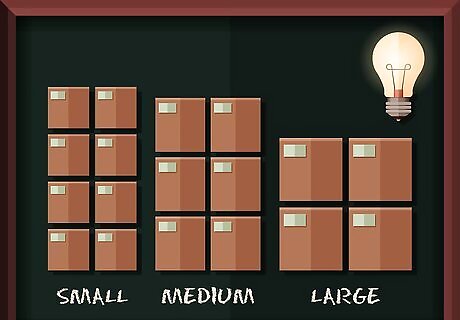
Organize the products being inventoried with the counters in mind. The effectiveness of an inventory system is heavily dependent on the accuracy with which the items being inventoried are counted. Inaccurate counting of products or merchandise often causes discrepancies in accounting, sales tracking, over-ordering and over-production, among other issues. An inefficient storage system also will significantly affect the cost of tracking inventory by increasing the amount of time taken to complete the process. Focus on making your inventory easy to access, separate, and count. Work on providing visibility, ease of labeling, and simple organization so that your counters can quickly access each item.
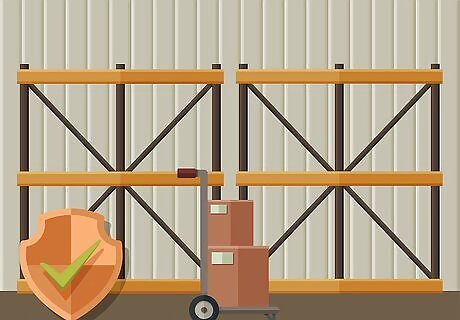
Consider storage requirements. Calculate the physical dimensions need to store your inventory. This could be an entire warehouse or a small closet, depending on the size of your products or materials and your sales volume. You should also consider any special conditions required for storage, like temperature or moisture control. There may also be state or federal laws dictating how you are required to store certain types of inventory, particularly for dangerous or controlled items.
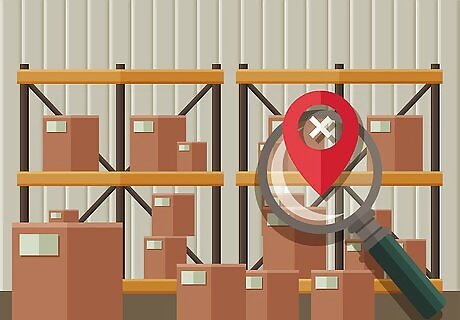
Design storage shelves to provide a clear line of sight to each item. Arrange the products being stored so that those responsible for taking inventory can easily access and count each individual item. Label everything so that it can be easily recognized and inventory can be placed in the proper area. Choose and set up storage shelves and bins depending on the type of inventory you will be storing in them. Consider the required size, height, and special attributes of the bins or shelves when choosing yours. For example, think about how heavy a shelf full of your inventory will be and choose a shelving system that meets or exceeds that weight requirement. Keep in mind that inventory kept on store shelves must also be counted in an inventory system. You can also use slotting to improve ease of use. Slotting refers to the placement of inventory in an efficient manner. For example, items that are typically shipped together might be placed close to one another in the warehouse. In addition, inventory should be set up such that the inventory with the highest turnover is the most accessible. Slotting should be planned from the start and then revised over time to account for new items and changes in demand or operations. Ideally, slotting should be rethought weekly or even daily. You should also consider getting rid of infrequently-sold and obsolete items as fast as possible. The odds that they will sell are low and many times these items are costing you more to store than they will bring in.

Consider a barcode system. If you have a large amount of inventory, you will need some way to track your inventory without referring to each item by name. The simplest way to do so is through a barcode system. Obtain a scanner that you can use to scan your inventory in and out and to perform inventory counts. However, if you have very few items or types of items, you may be able to use a simple visual system. You can then switch to a barcode system if your visual system becomes overly time-consuming or inaccurate. Make sure that the scanner is designed for your environment. For example, a hospital might need scanners that can be sterilized. You will also need a barcode printer to label shelves or spaces where the item with that barcode is stored. If you run a small operation, you may also choose to simply download an app that allows your employees' mobile phones to be turned into scanners.
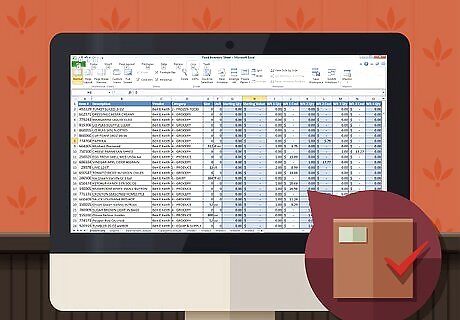
Format an inventory spreadsheet to serve as a master record of each inventory taken. Open a spreadsheet in a program like Excel, Pages, or Google Sheets to get started. Build out your categories using columns in a spreadsheet, listing your inventory items down the page in rows. An effective inventory system should include the following column heading categories: Use a column titled "Date of Count" to record the present date. Use the "Previous Quantity" column to record the quantity of this item from the last count. Use the "Quantity on Hand" column to record the total counts for each item. Include a unit of measure. Use the "Product Description" column to provide a description of the item(s) being counted. Use the "Build-To" column to represent the amount of items required on hand to meet projected demand. Use the "Amount Sold" column to represent the amount of items sold during the prior period. Use the "Cost of Sales Percentage" column to represent the cost of each item as a percentage of the cost of total sales. Use the "Amount to Produce or Reorder" column to automatically produce the number of items to purchase or produce to meet the demand of the next sales period. You can also use accounting software such as Quickbooks or Peachtree to manage your inventory levels.
Reconciling Physical Inventory to Book Inventory
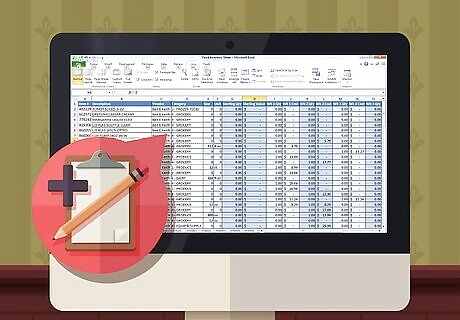
Enter the data for each category in the appropriate columns in the spreadsheet. Subtract the amount sold from the amount ordered to establish the "build-to." Then subtract the amount on hand from the amount of the "build-to" to determine the correct amount to adjust the inventory for the coming period. Don't forget to enter data for all types of inventory items, including raw materials and components.
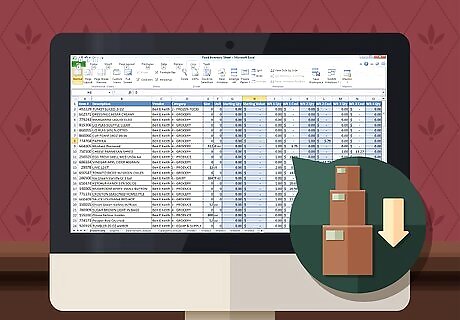
Adjust data for inventory shrinkage. Inventory shrinkage simply means inventory losses during regular business operations. Inventory may be lost due to theft, obsolescence, spoilage, or damage. Inventory shrinkage will account for the difference between a physical inventory count and the inventory count last recorded in the books. If you recognize any shrinkage before taking inventory, be sure to record it in your inventory spreadsheet immediately.

Separate inventory and administrative duties. Inventory management will require both physical inventory management like inventory counting and movement and administrative duties like the filing of the proper related paperwork and accounting. In large companies, these processes will likely be handled by separate departments or teams. However, even in the smallest businesses, you should have a different person to handle each side. This reduces the risk of theft.
Taking Inventory at Regular Intervals
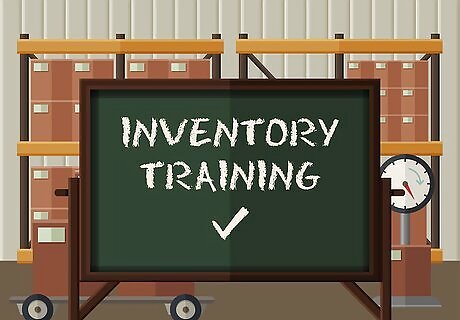
Train your inventory workers. The people working on your inventory and inventory systems are the most critical aspect of your inventory system. If they are untrained or unsure of who is supposed to perform an action, your inventory management efficiency and accuracy will suffer. Train your employees on every aspect of the inventory management process, including what is to be done at each point, who needs to do it, and how it should be documented. If necessary, write down these policies so that the employees can refer to a guide. This will help to prevent frustration and inventory mismanagement.

Perform inventory counts daily, weekly or monthly. The frequency with which inventory is taken will have a significant influence on the accuracy of an inventory system. Regardless of the type of operation, however, some types of operations will require more regular inventory intervals than others. For example, an auto dealership will not necessarily require the same frequency of inventory intervals as a department store or food-service operation. Focus on the most critical items first. Split up your items into three categories based on how frequently they sell. For example, try setting your high priority items as those items that make up 80 percent of your sales. Then, you can create medium priority and low priority categories for items sold less frequently. Once you have done so, you can focus the vast majority of your effort on your high priority items. This effort includes counting, forecasting sales, and reordering. Once this is done, you can use excess time for your medium and low priority items. Doing so will save you from wasting time on low-performing items.

Have two counters take inventory counts. This can significantly reduce the amount of human error when taking physical counts of inventoried items. Print out paper inventory sheets that correspond to the master record for use in taking the physical inventory. Have one individual perform the physical count by calling out the numbers aloud. The other counter will enter the numbers into the appropriate field in the master inventory spreadsheet as they are called. However, this doesn't necessarily have to be done at the same time. Inventory can simply be taken twice by different individuals. The figures can then be compared to ensure the accuracy of the inventory taken.
Improving Inventory Management

Analyze inventory data. You can improve your inventory management by analyzing inventory information. Specifically, you can work to understand how much inventory you need to be carrying at a certain time and when you should order more. Start by calculating your daily cost of goods sold by dividing your annual or quarterly cost of goods sold by the number of days you were open during that time. Then, divide your current inventory value by this amount. The result is your average inventory investment period. This figure represents how long it takes for your purchased inventory to be converted into sales, on average. You can then work to reduce this figure by ordering a smaller amount of inventory or working to get quicker payments from customers. You can also find your inventory to sales ratio by dividing your inventory value by your sales for the month. Track this value over time to see if it is increasing or decreasing. An increasing inventory to sales ratio means that you are purchasing too much inventory, while a decreasing one means that you should purchase more.
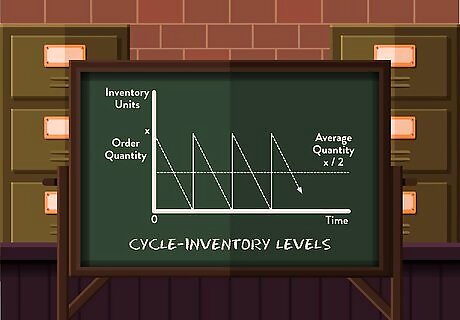
Optimize your inventory levels. Inventory levels must be managed effectively and kept at the correct level in order to maximize profit and reduce loss. Holding too much inventory increases the risk of obsolescence, damage, and spoilage while not keeping enough means lost sales opportunities. To optimize your inventory, start with sales projections based on previous periods. Then, adjust for trends and seasonality. For example, if you experience more sales in the fall than the rest of the year, you might want to adjust your inventory up for these months.
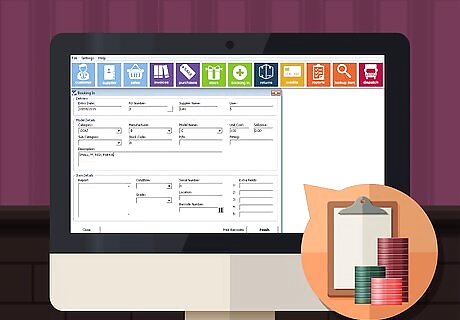
Implement inventory management software. While using an inventory spreadsheet might work for a small business, any sort of large or high-volume enterprise will need a dedicated inventory management software. These programs allow you to manage inventory, orders, and other data while providing useful analytics and tracking. Ideally, your system can integrate with your other business software to create a unified system and automate some of your operations. Research inventory management software packages online to find one that fits your needs. Popular providers include Oracle and SAP. Your choice of software will depend on your specific needs (volume, type of inventory, etc.), your budget, and your conversion time (how much time you can spare to implement a new technology).

Make efforts to reduce loss. Inventory shrinkage is typically small but can end up accounting for a substantial loss if not systematically reduced. Work to prevent theft by upping the security around your warehouse or storage areas. Reduce theft in your store by installing a camera system and keeping on eye on suspicious customers. You can also set up an alarm system that responds to the labels or RFID tags on your items. Reduce potential theft by employees by restricting access to product areas to those who absolutely need to be there. Reduce spoilage losses by staying on top of your inventory count practices. Remember to cycle older stock forward when shelving inventory.




















Comments
0 comment